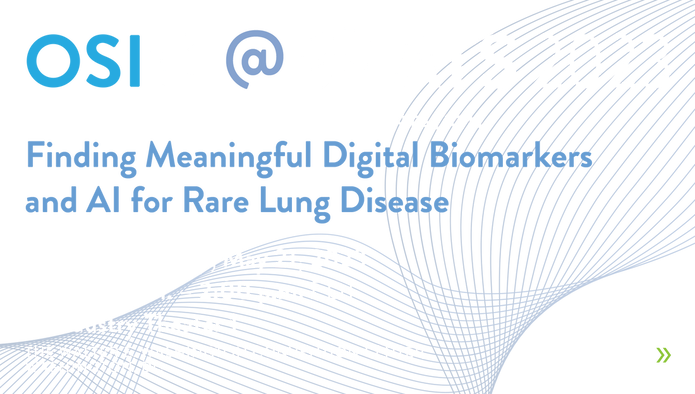OSIC Industry Theater presentation
|
Learn more about OSIC’s global repository of anonymized HRCT scans, and how you can get involved in our open source initiative. This AI showcase and roundtable discussion will also feature a panel of OSIC members eager to share learnings about using our multi-ethnic and multi-center data.
|
This presentation is sponsored by OSIC and is open to all ATS 2023 International Conference attendees
|
Creating Hope through Collaboration
“The greatest breakthroughs come at the intersection of different verticals. That’s the premise of OSIC,” said OSIC Executive Director Elizabeth Estes in the above WIRED video. “Bringing together radiology, pulmonology, computational science; bringing together academia, industry, philanthropy – that’s where breakthroughs happen, because you learn from people who have different vantage points.
From the very start, OSIC has been committed to making radical progress in the fight against idiopathic pulmonary fibrosis (IPF) and interstitial lung diseases (ILDs) through collaboration and innovation. We’ve also been adamant that an open source, patient-centered approach is the key to creating hope and better outcomes in this disease state.
The OSIC Data Repository is instrumental in helping make this happen.
Our global database of anonymized HRCT scans and clinical information regarding ILDs is the world’s largest and most diverse of its kind, with a plethora of real world clinical and imaging data that is both multi-ethnic and multi-center.
“The more data we have, the more confident we can be in the kinds of things we can do,” said Dr. David Barber, University College London & OSIC computational science lead. “We can make predictions of diseases, we can hopefully try to characterize and understand better how these diseases work. That’s why you need a consortium – you can’t do that alone.”
The technology is there to make advances in rare disease. We invite you contact us to learn more about our mission, the OSIC Data Repository, and how you can help make a difference in the fight against IPF and ILDs.
From the very start, OSIC has been committed to making radical progress in the fight against idiopathic pulmonary fibrosis (IPF) and interstitial lung diseases (ILDs) through collaboration and innovation. We’ve also been adamant that an open source, patient-centered approach is the key to creating hope and better outcomes in this disease state.
The OSIC Data Repository is instrumental in helping make this happen.
Our global database of anonymized HRCT scans and clinical information regarding ILDs is the world’s largest and most diverse of its kind, with a plethora of real world clinical and imaging data that is both multi-ethnic and multi-center.
“The more data we have, the more confident we can be in the kinds of things we can do,” said Dr. David Barber, University College London & OSIC computational science lead. “We can make predictions of diseases, we can hopefully try to characterize and understand better how these diseases work. That’s why you need a consortium – you can’t do that alone.”
The technology is there to make advances in rare disease. We invite you contact us to learn more about our mission, the OSIC Data Repository, and how you can help make a difference in the fight against IPF and ILDs.
Learn more about OSIC
|
We encourage you to contact us to discuss our mission, the OSIC Data Repository, and how you can help make a difference in the fight against IPF and ILDs. Additional partners, collaborators and contributors are welcome and encouraged.
|



